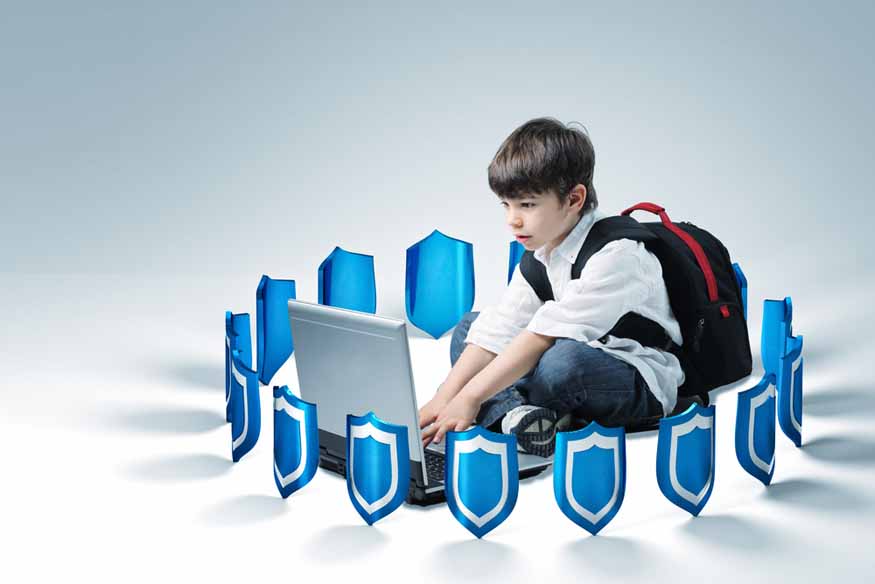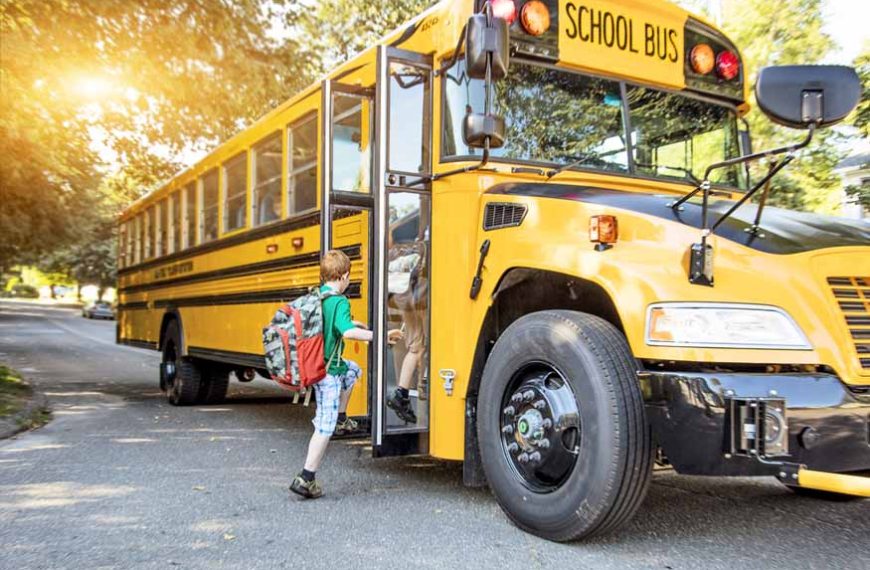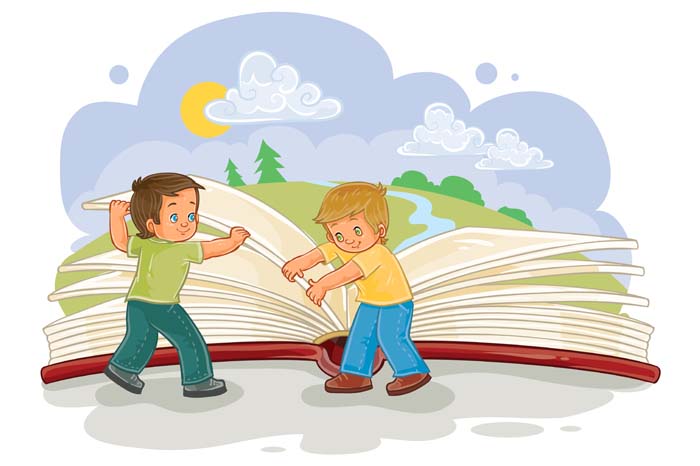Before we embark on the nuances of child safety at school, it’s pivotal to understand its evolution. Schools, once merely brick-and-mortar institutions with a singular focus on academic growth, have evolved into holistic nurturing grounds. This transformation has come with its share of challenges, especially in the realm of safety rules at school. From the days of simple wooden doors to the modern era of biometric access, the priority of child safety at school has always been paramount, but the methods have changed. Here is your simple guide on the various safety rules in the school classroom and some essential safety rules to be followed in school.
Mindful Measures in Ensuring Safety Rules at School Beyond Physical Protection
The modern education paradigm recognises that genuine safety goes beyond the tangible realm of physical protection. In a world where children encounter myriad pressures and challenges, both offline and online, their emotional and mental health are important aspects of safety rules in schools for students. Establishing a robust framework that addresses these issues is crucial to fostering a genuinely safe school environment.
3 Essential School Safety Measures to Build Resilience in Kids
It’s not simply academic pressures that weigh on a student’s mind in a world that is changing quickly. Interactions with others, one’s own self-image, and societal standards can all cause emotional anguish. As a result, schools are essential in fostering an environment where kids feel heard, understood, and supported.
- Trained Counsellors
- Peer Support Programs
- Awareness Sessions
Every educational institution should prioritise having trained counsellors on staff. These professionals can serve as a bridge between students and their challenges, helping them navigate the rough waters of adolescence and teenage years. They can identify signs of bullying, depression, or any other emotional distress early on and intervene appropriately.
Encouraging students to support and look out for each other can be invaluable. Peer support programs, where students receive training to assist their peers through challenges, can foster a culture of empathy and understanding.
Regular sessions focusing on mental health awareness, the impacts of bullying, and the importance of emotional wellbeing can be instrumental. By normalising discussions around these topics, schools can diminish the stigma often associated with seeking help.
At EuroKids, we practise these three safety rules for students at school to ensure their smooth learning experience.
“Children are the most valuable members of society. They need to be kept safe from risk of harm, whether it is physical, mental, or emotional. Therefore, child safety is of the utmost importance to parents.”
-National Centre for Excellence
3 Key Child Safety Measures – Protecting Online Searching for School Kids

The digital realm, with all its advantages, brings along a set of challenges. From cyberbullying to misinformation, children can find themselves in situations they’re ill-equipped to handle. Schools must take proactive steps to ensure that students not only use technology safely but also responsibly.
- Digital Literacy Classes
- Cyberbullying Awareness
- Online Privacy Workshops
It’s essential to introduce students to the nuances of the online world. Digital literacy classes should cover topics such as online etiquette, discerning trustworthy sources from misleading ones, and the importance of being cautious with sharing personal information. Further, digital literacy classes must be included under safety rules for kids at school.
The emotional toll of cyberbullying can be profound. Schools should organise sessions detailing the signs of cyberbullying, how to report it, and ways to support victims. Cyberbullying awareness must be one of the top safety rules for kids at school.
As students spend more time online, understanding the intricacies of online privacy becomes crucial. Workshops can introduce students to concepts like data security, managing digital footprints, and recognising potential online threats.
Safe Ride Solutions – Protecting Child Safety in School Transportation
Did you know that safe ride solutions are key in protecting child safety in school transit?
Between home and school lies another domain that demands attention – the journey itself. School buses safety, car pools, or walks; all possess their own unique set of risks.
- Bus Basics:
- Carpool Care:
Regular maintenance checks, trained drivers with background verification, and the presence of a responsible adult on every bus can ensure a smooth ride.
A system where parents are interconnected and updated about their child’s whereabouts can bring peace of mind.
The school administration must ensure safe transportation as one of the school safety rules.
Safety Rules at School for Healthy Eating
Did you know? Healthy eating is one of the most important school safety rules?
The school cafeteria is more than just a place to eat; it’s a hub of nutritional growth. But this hub can turn hazardous without the right safety measures.
- Nutritional Needs:
- Allergy Alerts:
Regular health and hygiene checks for the kitchen staff, pest control measures, and adherence to food safety standards are essential.
Schools should be aware of students’ dietary restrictions and allergies, ensuring every meal is safe for consumption.
4 Comprehensive Staff Training to Protect Child Safety in School
The quest for safety in educational institutions is ever-evolving. With the dynamic nature of challenges faced, the approach to safety cannot remain static. While infrastructural and technological upgrades play a role, the human element — the staff — remains irreplaceably significant. Ensuring they remain adept at handling any situation is paramount.
- Regular Training Sessions
- Updating Knowledge
- Reinforcing Protocols
- Specialised Courses for Different Roles
Beyond the initial orientation programmes, regular training sessions should be a staple in every school’s calendar. These sessions help in:
With the introduction of new technologies, tools, and challenges, staff must be acquainted with the latest trends and solutions.
Repetition aids retention. Regular training ensures that safety protocols are deeply ingrained in every staff member’s approach.
Different staff members play varied roles within a school’s safety framework.
Teachers: They can be trained in identifying signs of distress in students, be it emotional, physical, or digital. Their close interactions with students place them in a unique position to detect and address issues promptly.
Non-Teaching Staff:From janitors to administrative personnel, everyone should know the school’s emergency protocols. Moreover, specialised training, like understanding chemical safety for janitorial staff or cybersecurity for administrative roles, can be provided.
9 First-Aid and Emergency Response Essentials to Protect Child Safety at Schools
Every minute counts during emergencies. Below are nine first-aid and emergency responses essential to consider for child safety at schools.
- Equip staff with first-aid skills: from simple wound dressings to CPR, these skills can be lifesavers and disaster preparedness: earthquakes, fires, or any other unforeseen events—staff should be trained to lead and not panic.
- Engaging the Community: Building a Safety Ecosystem is essential to protect child safety at school. The school, although a significant entity, is nested within a larger community. Ensuring a child’s safety isn’t solely the responsibility of the school but a collective effort.
- Parental Involvement: Parents, being primary stakeholders, need to be engaged actively.
- Feedback Sessions: Parents can offer insights on potential vulnerabilities they perceive or have experienced.
- Awareness Programs: Educating parents about the school’s safety measures, digital safety, and how they can reinforce these at home can be beneficial in implementing safety rules for students in schools.
- Local Business Collaborations: Local businesses can be valuable allies in protecting child safety in schools.
- Sponsorships: They can support by providing resources, be it CCTV cameras, safety equipment, or even funds for training programmes.
- Workshops: Businesses specialising in areas like cybersecurity or emergency equipment can offer specialised workshops for both staff and students.
- Partnership with Law Enforcement: Schools can’t function as isolated fortresses. Partnerships with local law enforcement agencies is essential.
Detecting Vulnerabilities Through Routine Regular Checks
Drills and Training: Law enforcement can assist in conducting drills, ensuring the school’s procedures align with broader safety standards that draws a close on the various aspects of child safety at school. In the labyrinth of safety rules at school, every twist, every turn, and every nook, and cranny, holds its own unique set of challenges. Safety rules to be followed in school range from the physical premises to the digital domain, from emotional wellbeing to the journey back home. Safety rules in the school classroom are a multi-faceted concern. It requires the collective effort of teachers, parents, students, and the community. Please share your valuable thoughts, involve your family and friends and update us on your thoughts!
We guarantee to give importance to child safety at school. Talk to your child today by providing a safe space to have an open talk on the above-mentioned safety rules. Start the conversation at home and we will ensure your child’s protection at the EuroKids learning environment.
For informative and accurate articles on all things related to your new born-toddler’s development, growth, health and nutrition, follow EuroKids Blogs and do check out our nationally recognized preschools – EuroKids for the first step in your kid’s educational journey!














